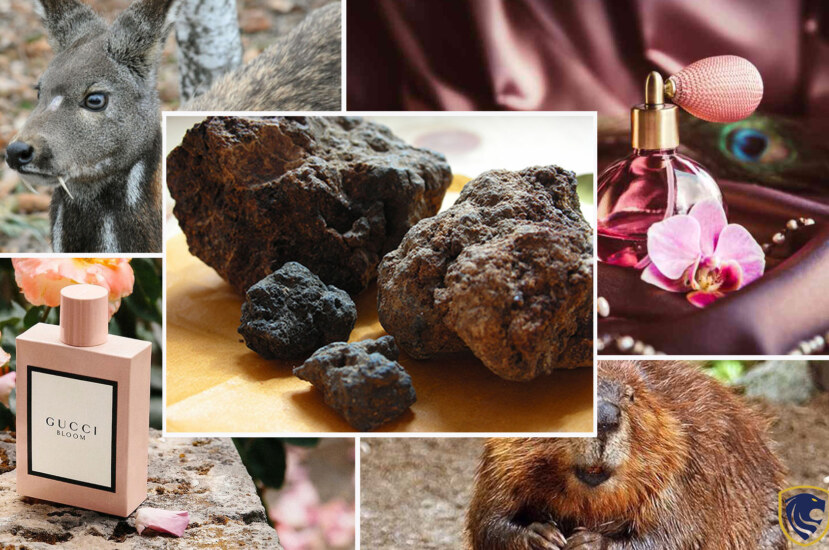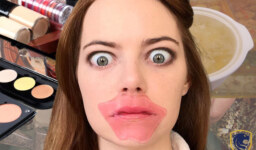A lovely perfume is a thing that we all have in our make-up pouches. For most people, perfume gives confidence. However, do you know what is in your perfume bottle? Do you know how it is made? Because there can be some bizarre ingredients in your little lovely perfume bottle.
Ambergris
The Ambergris is a waxy material that forms as a secretion in the sperm whale’s intestines. Scientists haven’t discovered which end of the animal excretes the ambergris. But they do know that fragrance Ambergris must have spent years floating in the water. Fresh ambergris is worthless for perfume since it has a very unpleasant odor. After a lengthy period of maturing, ambergris loses most of its unpleasant odor and becomes milder.
In addition, it also develops a slightly flowery fragrance. Its primary application in perfumery is as a fixative—even the smallest amount may make a perfume which is lasting for days on the skin. As a result, it was traditionally incorporated into practically every scent.

Weird Things That Are Used To Make Perfumes; Ambergris
Unlike many of the other things on this list, it is not animal welfare or odor that prohibits it from being used in current fragrances. But rather its high price—starting at $26,000 per kilogram. However, this price can vary depending on the quality. Because most ambergris is discovered by accident on beaches, the price is considerable. Ambergris was also employed as a food additive by the affluent in the past. Also, it was a favorite of King Charles II, who ate it often with eggs.
Blood and Semen
Secretions Magnifiques isn’t a newly launched perfume. It initially began coming to market in 2006 with the claim that its perfume was “as genuine as an olfactory coitus that sends one into raptures”. Yet, it needs a discussion. Mostly because no one seems to agree on whether it accomplishes its goal or not – or whether its goal is a worthwhile one to attain in the first place.

Secretions Magnifiques
Secretions Magnifiques is said to combine the aromas of sperm, perspiration, blood, and breast milk into a powerful mixture. This mixture stimulates the nose and carnal senses. At first blush, that sounds disgusting. However, those who have tried Secretions Magnifiques aren’t always disgusted. in fact, people who have unfavorable reactions to the perfume aren’t necessarily disgusted.
In fact, individuals who have particularly strong negative reactions to strong perfumes are more likely to be those who were told in advance what it was meant to smell like.
Musk
Twenty-five-pound musk deer are barely twenty inches tall. They don’t develop antlers. Also, they are timid, and live alone. Musk is only produced by adult males and is kept in a hairy pouch in front of the penis that is about the size of a golf ball. The dried gland is broken up into little pieces and matured in high-strength alcohol for many months. Sometimes it grows for years, to produce musk for use in perfumery. Its sweetness, generosity, duration, and olfactory intensity provide grace and brilliance to any scent combination.
Musk has long been and continues to be a staple for scent. Due to the extremely high cost and rarity of genuine musk, humans started looking for synthetic alternatives even before they were worried about the future of the species. Nevertheless, musk’s unique smell composition and impact cannot be replicated in a laboratory.

Weird Things That Are Used To Make Perfumes; Musk
Nonetheless, musk deer numbers had been reduced to dangerously low levels by the turn of the century. Also, the species had completely vanished from most of its native Himalayan territory. The CITES agreement places restrictions on deer hunting, and most nations severely prohibit the commerce of natural musk. But there is an exception to this rule in France and Japan.
There have been initiatives in China over the past 50 years to farm-raise the imperiled Alpine musk deer. A 2011 research came to the conclusion that musk deer could be managed and bred sustainably.
Civet Musk
A viscous secretion produced by the glands of the civet cat, a mammal most frequently seen in Africa and India, is known as civet musk. Animals raised on farms in Ethiopia provide the most valuable civet musk. Civet musk has an unpleasant and strong scent. It has a long history of application in food additives and fragrances. However, Civet musk generates a highly distinct and alluring floral animalistic scent in extremely diluted form, just like many of the components on this list.

Weird Things That Are Used To Make Perfumes; Civet Musk
It was utilized in the original Ernest Beaux Chanel No. 5 as well as François Coty’s famed Chypre in extremely high concentrations. Up until the latter half of the 20th century, civet was a common ingredient in fragrances. Even now, high-end perfumes still contain the component. But mainstream scents either skip it entirely or substitute it with a synthetic ingredient. Civet paste used to be tampered with in the past to boost trader profits. Honey and human baby excrement were the major inert materials, which is a good point to show how bad the genuine stuff smells.
Castoreum
In traditional leather fragrances, castoreum has been used as the finest leather scent, evoking beautiful leather furniture. The castor sacs of the beaver, which may be found in both men and females between the pelvis and the base of the tail, are the source of castoreum. The beavers themselves use it to scent-mark. Also, they build smell mounds comprised of mud, detritus, and castoreum at the edge of their area. Beavers are very territorial and hostile toward outsiders.
The castor sacs, which are packed with viscous material, must be collected by killing the beaver. The sacs are either smoked or sun-dried. Furthermore, as they ripen, they take on the shape of extremely large dried figs. In the meantime, the castoreum’s perfume develops into that of pleasant, clean leather. In addition, it gives aromas of an erotic, spicy, ambery flavor.

Weird Things That Are Used To Make Perfumes; Castoreum
Due to its beneficial effects linked to the salicylic acid obtained from the willow bark in the beaver’s diet, castoreum was used to cure illnesses ranging from headaches to hysteria. Castoreum was supposed to have the ability to cause an abortion by the Romans. Paracelsus believed it could be used to cure epilepsy. Furthermore, medieval beekeepers utilized it to boost honey output.
The Native American Cree advised boiling the smell sacs and using them as a plaster on wounds to stop bleeding and stop infection since their western journey was closely linked to their hunting. Along with chewing willow bark itself, the Yupik in Alaska also uses dried beaver sacs as painkillers.
Hyraceum
The rock hyrax is a medium-sized mammal that looks like a large guinea pig. Its’ closest surviving cousin is the elephant. The excreted hyraceum, commonly known as “Africa stone,” is petrified and has the consistency of rock.
Hyraceum is as thick and stone-like as it gets. The jelly pee first dries up, then the animals compress it, and finally, the passage of time turns it into a fossil.

Weird Things That Are Used To Make Perfumes; Hyraceum
It is not surprising that Hyraceum is regarded in South Africa as a treatment for illnesses and disorders of the kidney and bladder. The leathery odor of Hyraceum implies that it contains a sizable proportion of pheromones, which are excreted by all animals through their urine.
Hyraxes pick a location close to their houses, and this stinky mass likely serves both as a colony edge and a social pheromonal function.



